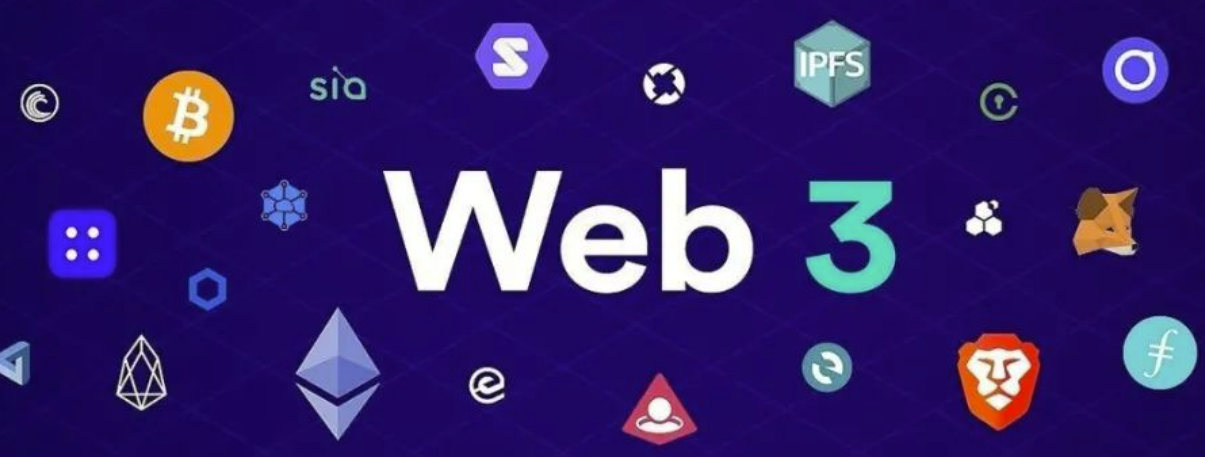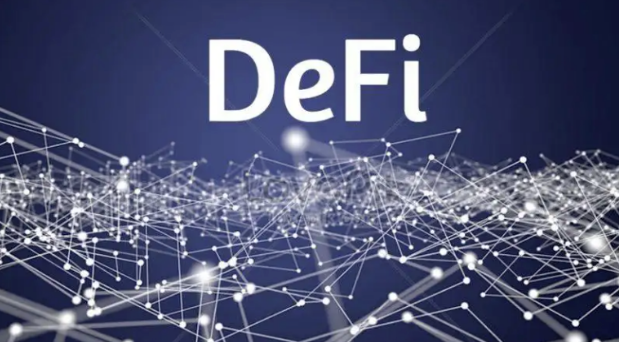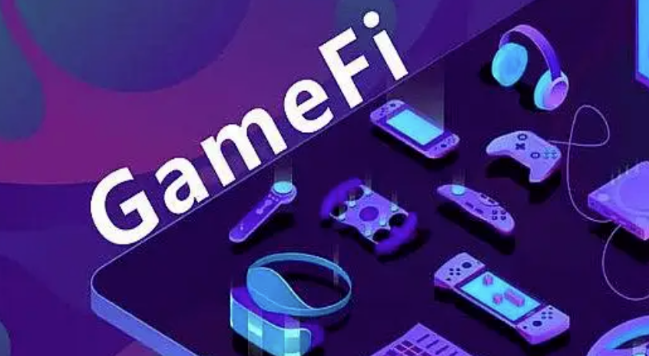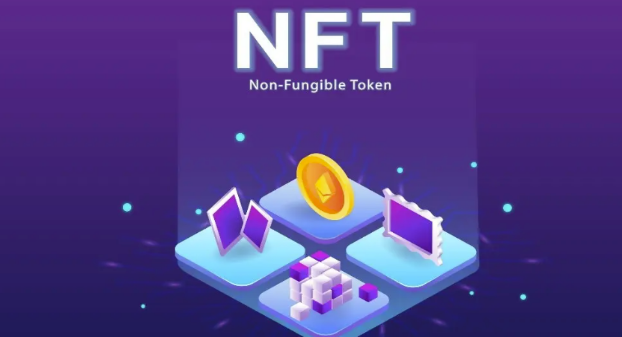Original link: https://www.hellobtc.com/kp/du/07/3974.html
Author: Qiao Wang / Source: Vernacular Blockchain

Author | Qiao Wang
Compile | Fire
Produced | Vernacular Blockchain (ID: helloBTC)
The predecessor of Alliance DAO was the Web3 incubator DeFi Alliance (Defi Alliance). Since its establishment, it has participated in the incubation and construction of 140+ encrypted ecosystems, including star projects such as 0x, Alpha Finance, dYdX, Kyber, Olympus DAO, Paraswap, Ribbon Finance, Sushiswap, Synthetix and Zerion, covering a wide range of content.
In January 2022, DeFi Alliance created a decentralized organization, Alliance DAO, and completed a $50 million financing. Over 300 contributors joined DAO and participated in financing. As a result, Alliance DAO began to replace De Fi Alliance and entered the public eye . The largest accelerated DAO in the WEB3 field.
Qiao Wang is the founder of Alliance DAO, here are some exciting crypto/Web3 startup ideas and topics he collected at AllianceDAO.
01
Decentralized Infrastructure

1. Decentralization of all layers of the decentralized stack
In recent years, the space seems to be less keen to focus on decentralization, and it is this trend that makes the space interesting. We see memes like “Users don’t care about decentralization”.
But decentralization is on paper until it happens. With the recent collapse of centralized crypto institutions, as well as broader financial and social scrutiny across the globe, decentralization is more important than ever.
Applications are as decentralized as the most centralized tier. So the whole stack needs to be decentralized.
The layers of the stack include:
-
DNS (eg Handshake)
-
general computing
-
Data storage (for example, Filecoin)
-
Data index (eg, Graph)
-
Oracles (for example, Chainlink)
-
bridge
-
Node infrastructure
-
Fiat on-ramp and off-ramp
-
wallet
-
ISP (e.g. Helium: a new way to mine digital currency using IoT electromagnetic waves)
-
CDN
It appears that many of these layers already have a dominant decentralized player. However, most existing players are making up the numbers at best. But these are some of the most challenging engineering and computer science problems in Web3.
2. Decentralized Postgres (Database Management System)
There is currently no way to write a full-blown client-side application as easily and completely decentralized as in Web2. In Web2, you spin up a database on AWS and have your client applications call that database for reading and writing. But there is nothing like that in Web3.
You can’t just write data to Ethereum, it’s too expensive for most users. Storage protocols such as Filecoin and Arweave are primarily used for archiving data, but do not provide enterprise-level performance guarantees for writing and reading data.
And a decentralized Postgres will be able to support a large number of new applications.
3. Decentralized AWS Lambda
An activity-driven decentralized computing network that:
-
Run code in response to events triggered by the frontend or smart contracts
-
Automatically manage the resources needed to run the code
-
Supports read/write blockchain and storage protocols.
4. Decentralized cross-chain Etherscan
Built as a protocol or monetization API, so developers can build on top of data. for example:
-
View any wallet/contract
-
Support contract verification and contract invocation
-
Support for contracts and wallet tags
-
Track block generation and block data
5. Distributed GPU rendering
A market between those who need GPU computing power and those who have idle GPUs. Potential applications include training AI models, Metaverse rendering, and GPU mining.
6. Specific L2 applications as services
Ecosystems such as Axie, Bored Apes and dYdX have launched or are considering launching their own Lisk. By doing so, they sacrifice shared security, atomic composability, and engineering simplicity in exchange for throughput, sovereignty, and value appreciation. An alternative to application chains might be application-specific L2.
The app-L2-as-a-service offering will make it very easy for dapp developers to roll out their own L2. It will recruit sequencers/validators behind the scenes. It can even launch indexers, oracles, bridges, block explorers, etc. applied to specific programs.
7. An oracle for static Web2 information
At present, the oracles in Web3 are mainly used to pull high-frequency information such as prices from CEX. This enables applications such as lending and derivatives.
This also requires oracles with relatively static information from:
-
Web2 social/messaging like Twitter and Discord
-
Game platforms such as Steam
-
KYC provider
-
credit bureau
-
bank
These oracles enable a host of new use cases, such as Sybil resistance.
Note: The function of the oracle machine is to write external information into the blockchain to complete the data exchange between the blockchain and the real world.
9. Semi-custodial wallets
Wallet infrastructure remains the biggest bottleneck on the road to mass adoption.
By design, centralized escrow wallets sacrifice flexibility for security. Aside from exchanges and transfers, it’s impossible to use things like custodial Coinbase wallets. Unlimited access to dapps requires a decentralized self-service wallet.
The wallets we would like to see are “semi-custodial”:
-
The user keeps one key and the company keeps the other. Both require a multi-party computation (MPC) sign-off for the exchange. If only one party is hacked, the funds are still safe because no one has the full key at any one time.
-
MPC (Multi-Party Computing Platform) also allows recovery of their keys through third parties (e.g. AWS KSM) if users lose their keys.
Ideally, the wallet provides a WeChat-like super-app experience with direct access to various apps. This improves the user experience.
Finally, the wallet should have some or all of the following properties:
-
Easy access inside the wallet
-
Easy integration for dapp developers
-
Multi-chain support
-
Batch exchange (sign once to perform multiple on-chain exchanges)
10. The protocol is separated from the client
There are multiple teams building social protocols today, such as:
-
address-to-address messaging protocol
-
social graph
-
Identity and Credentials
However, the winning protocol is likely not built by the protocol’s priority ecology, but by very successful consumer-facing clients that eventually open up their “server-side” for other developers to build on top of Construct.
After all, if you have a killer app, it’s easier to attract developers to build on top of your protocol.
(Ethereum is clearly the opposite. Developers didn’t wait until the Ethereum Foundation built a killer app to hack Ethereum. The reason is that Ethereum is a highly generalized low-level protocol, while social protocols are more Specialization, higher level. )
02
developer tools

1. Web3 Vercel/Firebase
Enables launching a static frontend, deploying to IFPS, and setting up an ENS domain for resolution, with DX similar to deploying a Web2 site to Vercel.
2. Solana development tools
Brings DX closer to EVM DX. Consider Solana’s HardHat/Foundry.
03
DeFi

1. Market-driven lending agreement
Prices in most existing lending protocols today are not driven entirely by the market, but by mathematical formulas with few governance or degrees of freedom.
2. Bridge Aggregator
Think 1-inch bridges. Built to be composable so that wallets can use your bridge aggregator instead of holding each bridge manually.
3. Market forecast
Especially sports betting. The Web2 betting platform also suffers from the same problems as:
-
Users don’t really own their assets
-
Users are censored by the platform
-
The platform disregards the interests of customers in order to cheat
4. Delta One Derivatives and Options DEX
The volume of decentralized derivative protocols is currently a fraction of that of centralized exchanges.
5. Privacy DeFi Protocol
A DeFi platform that allows users to exchange some or all of the following information in a confidential manner:
-
sender and recipient addresses
-
Asset exchange
-
Turnover
Ideally, platform-wide systemic risk metrics such as leverage would remain public.
6. Bitcoin DeFi Protocol
It is a product that provides Bitcoin (the most liquid encrypted asset) with more utility than holding storage, through which income, exchange, payment, etc. can be generated. Even the solution has to be semi-centralized.
7. DeFi protocols with minimal governance
In fact, most governance forums today are theaters of decentralization.
Due to securities laws, governance is done in a decentralized manner. However, the committee’s decision backfired. This is a key conundrum facing most DeFi protocols.
We would like to see DeFi protocols that minimize the number of governable parameters. To some extent, market-driven lending protocols are an example of this.
8. Access to institutional-grade platforms for DeFi
A platform for institutions to access various DeFi protocols and conduct activities such as exchange and borrowing.
04
GameFi

1. Fully on-chain game
On-chain games are games where the entire game state and game logic (not just in-game assets such as currencies and NFTs) are written into the blockchain.
Concepts such as tic-tac-toe, turns, 3×3 board, players and sequences of three must be immutably documented as rules, as well as a history of player movements.
On the other hand, the color of the board and pieces, the shape of the pieces (X and O can become Y and Z), animations, sounds, etc. can all be kept on the client side.
Putting all state and logic on-chain unlocks various novel behaviors:
-
Smart contract-based players (as opposed to human players) play according to smart and constantly improving rules.
Think about composability between games and players. One of the earliest examples was actually MEVs in DeFi. MEV bots are smart contract-based players, and MEVs are games. Note that in this case, smart contract-based bot players compete not only with each other, but also with human players.
-
Trustless collaboration between players through smart contracts.
Consider composability between players. Take Dark Forest, which at launch was a multiplayer game with only unofficial alliances. In order to work together, you need to trust that other players won’t betray you. However, someone built a smart contract to act as a competitor. The contract allows players to donate points without permission, eventually ranking high enough to win prizes. It keeps track of it, and then when it wins, those players are able to share that winnings proportionally.
-
Game mods built by third-party developers without fear of being de-platformed.
Consider composability between games, again taking Dark Forest as an example. Someone created a single-player spinoff of a multiplayer game. Since Ethereum rarely uses the diamond standard, the same logic as the main contract is used. All that has changed are maps, user experience and ratings. Instead of players trying to control each other in sync on the same terrain, everyone is trying to solve the same puzzle, but faster than the others.
2. Game publishers
Web3 game developers face unique challenges such as:
-
Very poor experience with existing users (for example, installing wallets)
-
obey the rules
Web3 native game publishers make it as easy to get developers to release games and players to start playing as Steam does for Web2 games.
3. Game Engine
While most game engines being built in this space today look to add web3 capabilities to web2 products, we’re actually excited about creating native web3 game tools. What if we could create an interaction or physics standard for on-chain games. Imagine even Dungeons & Dragons’ on-chain laws, anyone being able to reuse and remix that kind.
4. Gaming as a Web3-Native Social Networking/Messaging Way
The Web3 community is obsessed with decentralized social/messaging. However, the first truly successful Web3-native social networking/messaging app won’t look like Twitter/WhatsApp, as simply being scattered across the stack may not be enough to entice users to switch.
The game may be wedges. A Web3-native game that is fun and interactive enough to attract a lot of users can turn itself into a popular decentralized social networking/messaging app, ie, a place for people to hang out.
(The second largest category of applications that can win Web3 social/messaging is DeFi. DeFi is gamified finance, so to speak.)
05
Tools for the Web3-Native Community

1. Web3-Native Community Launchpad
The “Web3-Native Community” has several names, such as the DAO and NFT communities. But basically, it’s a group of people who share incentives.
The no-code launchpad will first let them launch the associated smart contracts and crowdfunding, which are the most immediate and scalable pain points. Once a certain number of users have been acquired, the launchpad will be able to identify other user needs such as membership participation, access control and governance login.
Eventually, such products will be unbundled among different types of communities.
2. Back office
The Web3 community has unique software needs:
-
Accounting
-
Tax
-
Payroll
-
B2B payments
-
Bounty Management
Because their financial exchanges are often on-chain.
3. User-owned productivity/publishing/communication tools
“User-owned” means one or both of the following:
-
Uncensorable
-
privacy protection
Any individual or organization using mainstream tools like Notion knows this is an existential risk for them. With so much mission-critical information and workflows ultimately controlled by a single tech company, it is vulnerable to scrutiny or privacy violations by the tech company itself or the government.
The first to market will be the Web3 native community, as they happen to be a group of people who care about censorship and privacy, but of course ultimately the product may be useful to non-Web3 individuals and entities.
3. The “Investment Bank” of the Web3 Community
Similar to traditional companies, DAOs require consulting on equity financing, debt financing, mergers and acquisitions, treasury management, and more.
4. DAO as a risk sharing tool
There are some high-risk, high-reward careers:
-
professional player
-
white hat hacker
-
Youtube/TikTok creator
-
musician
-
story writer
-
drug developer
-
Real estate entrant/developer
A DAO for gamers/hackers/creators/musicians/etc could be the perfect tool for these professionals to share risk while maintaining the same expected return.
It is no coincidence that the first generation of DAOs were investment DAOs. Entrepreneurship and investment are high-risk, high-reward activities
These DAOs will provide three main functions:
-
Curators: They need to look for high potential members.
-
Risk sharing: They invest in new members in exchange for future financial benefits, while members can choose to share their strengths.
-
Support : They provide support to each other, such as marketing and distribution.
Why DAOs vs Traditional Legal Entities? Fundamentally, DAOs can reduce the friction associated with traditional legal frameworks. DAOs may be a better option than traditional legal entities if the following conditions are met
-
Frequent membership changes: imagine the amount of paperwork involved!
-
Membership is global: multiple jurisdictions means more legal and banking complexities.
-
Members want to remain anonymous: KYC/AML requires the establishment of a traditional legal entity.
06
NFT

1. NFTs as digital native intellectual property
Think of intellectual property as an asset class. To understand the importance of this asset class, intangible assets have increased from about 1/5 to about 4/5 of the market capitalization of the S&P 500 over the past 5 years.
NFTs representing a single IP can help unlock the liquidity of various assets, such as:
-
Music, Video, Writing and Art
-
Proprietary Technology and Scientific Discoveries
-
brand
Then there is the establishment of a primary and secondary market focused on specific types of assets.
Today, several such NFT markets exist, but what makes NFTs really interesting is not the speculative nature of these assets, but the ability to create derivative works from these assets, ie they become productive assets.
At first, we could use the traditional legal system to attach intellectual property to a specific NFT, such as the tokenization of IP.
Ultimately, however, NFTs may become digital native IP.
We’ve seen in many popular PFP ecosystems that “right-click-save” not only doesn’t destroy the value of the original work, but actually market it for free.
With this bit of social consensus, coupled with the help of NFT fraud detection products, and programmability (e.g., program royalties in smart contracts), we can see that the original work naturally generates value.
2. In-app NFT marketplace
Game developers prefer to use in-app marketplaces for their NFTs for two reasons:
-
Having to move from gaming apps to external markets ends up giving users a lot of bad experience.
-
They want to return the transaction fee to themselves or their community, not a third-party NFT marketplace.
The idea is to build an API/protocol for game developers to launch an in-app NFT marketplace. This idea can be extended to other consumer products like NFT platforms like music/video/brands. Tokens as a tool for coordinating human activities Tokens may be more effective than capable centralized entities such as governments and large corporations in coordinating large-scale human activities.
3. Contribute data to earn money
For “x-to-earn” to work sustainably, participants who earn tokens must provide something of value to the rest of the network. Data contributions are obvious candidates for “x”.
Today, it is not our inability to process, understand, and derive value from data that is holding us back from making meaningful progress in various fields, but our lack of data .
Tokens can be used to incentivize large numbers of people to bootstrap valuable datasets such as:
-
Visual data needed to train autonomous driving models
-
Health data needed for research and drug discovery
-
3D rendering of our planet: Think decentralized Google Earth
-
Internet Consumer Behavior: Think Decentralized Nielsen, a $3B a Year Business
-
Real-time crime data token holders finally get some value from the datasets they helped create
4. Addressing the Tragedy of the Commons
We don’t know exactly what this will look like, but we suspect it is possible to use token economics to align incentives between individuals and the commons to induce large-scale behavioral changes in the way we interact with our surroundings.
5. Split of major consumer goods
Web3 product categories that can be split include but are not limited to:
-
NFT market
-
wallet
-
DeFi aggregators/dashboards, they can be unbundled
-
geographic area
-
User segmentation (eg, hobbyists vs professionals)
-
Verticals (e.g. gaming, art, music, etc.)
-
public chain
-
Devices (e.g. desktop vs mobile)
Take the NFT market as an example. Each could potentially have an Opensea, and fundamentally, consumers in these different segments have different needs and preferences. Therefore, it is simply impossible for one market to serve all markets.
6. The intersection of AI and Web3
Artificial intelligence naturally intersects with Web3 because at its core is an open ledger of high-value data. Specific applications of artificial intelligence to on-chain data include, but are not limited to:
-
credit score
-
NFT Plagiarism Detection
-
In-game cheat detection and retrospective airdrops
-
Artificial intelligence in on-chain games
-
Analysis of Allocators and Exchangers
-
Personalized recommendations based on wallet activity (think Web3 native ads)
-
Contribute data to make money
7. The intersection of health science and Web3
Two questions plague health science:
-
lack of funds
-
Lack of data (and arguably due to lack of funding)
This can be mitigated by the following cryptography, known by many as DeSci:
-
DAOs as a risk sharing tool
-
Contribute data to make money
07
Anonymous Economy and Web3
The anonymity economy is one where your coworkers, partners, counterparties, and competitors don’t know your name, location, gender, race, nationality, height, and accent.
Encryption is one of the key drivers of the anonymous economy. Using public key encryption, users are able to separate their financial and social activities from their real names.
08
summary
The above is the entrepreneurial idea shared by Qiao Wang, founder of Alliance DAO, in the fields of decentralized infrastructure, developer tools, Defi, Gaming, Web3 community tools, and NFT. Do you have any ideas after reading it? Welcome to the comment area to exchange and discuss~
Original link: https://ift.tt/dMiawTG
Original title: Crypto/Web3 Startup Ideas
Author: Qiao Wang
Compilation: Fire
This article is reprinted from: https://www.hellobtc.com/kp/du/07/3974.html
This site is for inclusion only, and the copyright belongs to the original author.